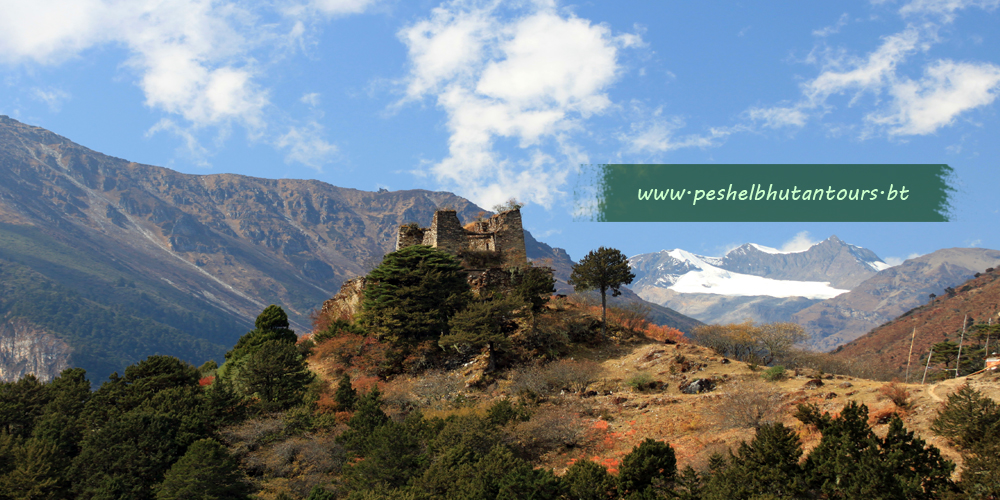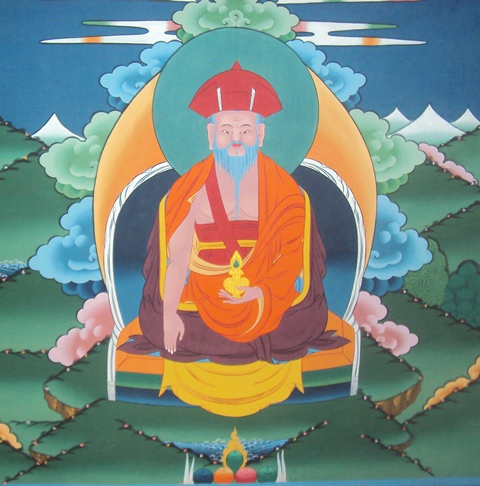BHUTAN TRAVEL INFORMATION
Accommodation in Bhutan
Bhutan being a very small country and a developing one has very few tourist accommodations which are luxurious but there are a lot of accommodations which offer basic necessities, especially as you travel further east. If you are looking for a bit of luxury then we can arrange for you to stay at 5-star establishments namely Amankora (in Thimphu, Punakha, Paro, Gangtey and Bumthang), Uma Paro and Hotel Taj and newly opened Hotel Le Meriden. These establishments have been developed as a result of Foreign Investment in Bhutan. They offer a variety of privileges which are quite unique from the other establishments, therefore be prepared to pay for these privileges. Also now we have some local hotels which have improved the services and facilities such as Zhiwaling. We can also arrange for cooks to accompany you on treks and camping tours that are skilled in coming up with delicious meals.
Tour Guides in Bhutan
Our tour guides have good knowledge of the history and culture of Bhutan and are very hospitable in nature. They are certified by the Tourism Council of Bhutan. No guide is allowed to guide if he or she doesn’t bear certified Guide License. The most common mode of communication is English but we can also provide guides who can speak French and Japanese and other languages with extra payment.
Language
We have many other regional languages and the National Language we speak is called as “Dzongkha”, but English is very common among Bhutanese as well and is spoken fluently by most of us. Therefore it is the second official language and it is a medium through which communication takes place.
Food
Bhutanese dishes consist mostly of vegetables, chili, cheese, chicken, beef, pork, yak, rice with "Ema Datse" is the national dish (chili & cheese stew) Momo (cheese or pork dumplings), Hogay (cucumber, tomato, onion, and cheese salad), curries with chicken or pork, Nosha Paa (beef and chili) – these are all popular Bhutanese dishes. Due to the hot flavoring and abundant use of chilies in the cuisine it is spicy. There is little to no seafood but on request you can get buffet style meals with choice of continental, Bhutanese and Indian Cuisine. Our cooks, who accompany the treks and camping tours, are well trained and equipped and can come up with delicious feasts every day. For beverages locals enjoy Yak Butter Tea (tea leaves, water, salt, & yak butter) and Ara (spirit distilled from rice).
Seasons in Bhutan
Spring in Bhutan is a botanist’s delight as rhododendrons, wild azaleas, and masses of wild flowers including the edelweiss cover the meadows like carpet. Pear and apple blossoms add a dainty touch to the valleys as their pink and white blooms add a sense of new wonder to the land that is about to burst with abundant growth again.
Summer in Bhutan is an abundant time of years as flowers are in bloom and the valleys are covered in green, weeping willows sweep the banks of many the rivers and the pine cones glisten in sun, so full with resin they are ready to plummet to the ground.
Autumn in Bhutan casts a bright golden glow on the vast landscape and is one of the more crowded times of the years for Bhutan tourism. In fall, rice fields ripen to a golden brown under crisp blue skies. The merry pink and white of cosmos flowers dot the countryside.
Winter in Bhutan has its moments. The days are full of sunshine while evenings can turn chilly. The winter landscape lays bare the majesty of the mountain and the sweeping valleys. Soft tufts of cloud drape lazily over mountain tops as if waiting for new life to blow it across the landscape.
Medical
The Government of Bhutan does not check for vaccinations upon entry into Bhutan. Being up to date with usual Asian vaccinations is recommended. Hospitals and medical facilities are available in all the districts of the Country. As most parts of Bhutan are situated at high altitude, it’s a non-Malaria region except in southern parts of Bhutan. Strict hygiene standards are enforced in the food production areas by BAFRA (Bhutan Agriculture and Food Regulatory Authority).
You may suffer from altitude sickness. Altitude Sickness is the result of your body’s failure to adjust to higher altitudes because of the rate of ascent. It can occur as you travel from sea level to high elevation. For 99% of travelers the elevation of the country and passes between the valleys does not create problems. For travelers going on treks we need to know whether they have any former history of altitude sickness. We strongly recommend that you purchase comprehensive insurance and have a complete medical checkup before you leave home. Please inform us of any pre-existing medical condition.
Headache, loss of appetite, nausea, vomiting, fatigue, insomnia, shortness of breath, and tingling on hands or feet are Symptoms of altitude sickness and it can be cured by Aspirin, ginger tea, butter tea, and in severe cases for people who have previous difficulty 125mg of Diamox every 12 hours (not available in Bhutan) as well as Reduced altitude will be of great help.
Electricity
We generate our own hydroelectricity with the help of our rivers. All towns in the urban areas of Bhutan have power supply. The supply of electricity to villages some distance from the road is an ongoing project so many outlying towns are not connected yet. Trekking will take you far from electric supplies. The voltage supply is 220 volts, 50 cycles AC with a three prong plug.
Communication
All major towns have basic communication facilities such as internet cafes, telephone, fax, telegraph and post. There are satellite and national television broadcasts (Bhutan Broadcasting Service) in the major towns. If you have international roaming mobile coverage, you should check with their coverage provider if Bhutan is included. If not, identify this before arrival, SIM card and recharge card (Voucher) is easily available in town for tourist.
Shopping
Unique items to purchase while in Bhutan:
- Himalayan antiques from Tibet, Nepal, and northern India
- Bhutanese crafts:
- Weaving products made from silk, cotton, yak hair, & wool • wood bowls, cups, masks, & carvings
- Religious paintings called thangkas
- Jewellery
- Paper making or Desho (coming from the word “de” referring to the Daphne plant)
Bhutanese consumables include tsheringma tea, honey, apple products, etc. Best selection of shopping is done in Thimphu. Shops on the street will accept Ngultrum, the Indian Rupee (at par 1 to 1 with the Nu), and the US Dollar. The only credit card accepted at shops (limited shops) is Visa. Banks will not perform cash advances on credit cards. There are no ATM machines available for international transactions. Traveler checks can be cashed at banks within the previously listed currencies. It is illegal to export or remove Bhutanese antiques from Bhutan. If uncertain, certificates are available from the Department of Antiquities to determine if the item is a true antique and where its origin is from. An antique is defined as a religious item 70 years old or more. All other items 100 years old or more.
Photography
Bhutanese are usually happy to be photographed. All it takes is a simple gesture to get their agreement. However, there are some restrictions on taking photographs in the Dzongs, monasteries and temples.
Currency
The national currency of Bhutan is the Ngultrum (Nu) and it currently trades at approximately Nu 50 to US $1.00. The three currencies accepted within Bhutan are the Ngultrum, the Indian Rupee and the US Dollar.
Currencies accepted as foreign exchange within the banks are:
- US Dollar
- Pound Sterling
- Euro
- Japanese Yen
- Swiss Franc
- Hong Kong Dollar
- Canadian Dollar
- Singapore Dollar
- Danish Kroner
- Swedish Kroner
- Norwegian Kroner
Clothing
Due to the varying temperature and climatic conditions it is advisable to dress warmly, layered clothing is better than one or two thick garments in order to keep warm. Clothing should preferably be made from natural materials in order for the body to be comfortable.
As Bhutan is in its developing stage people think differently therefore it would be advisable for you to avoid walking around in skimpy or tight fitting clothes. For visits to monasteries, dzongs and other religious institutions dress modestly and respectfully, and refrain from smoking while on the premises. Hats, caps, shoes etc. should be removed before entering the premises.
You need to pack clothes as per season, sunglasses/spare glasses, pair of casual shoes, knife, hat, umbrella, camera, films and accessories (including spare camera batteries), insect repellent, hand cream, small sewing kit & safety pins, torch or flash light with spare batteries, mirror, scissors, sun cream, lip salve, soluble aspirin, antiseptic cream, anti-histamine cream, anti-diarrhea pills, a preparation for the relief of sunburn, and any medication you take regularly, or might need to take for a periodically recurring condition, such as asthma.
Time in Bhutan
Bhutan Standard Time is six hours ahead of GMT (Greenwich Mean Time) and one time zone for the whole country. Bhutan is 30 minutes ahead of India, 1 hour behind Thailand, and 15 minutes ahead of Nepal.
Driving in Bhutan
All major towns in the 20 districts of Bhutan are accessible by road. In-spite of high mountains, steep slopes, and the deepest of valleys Bhutan has a relatively well developed network of roads. Steep ascents and descents are characteristic of road travel in Bhutan make travel much slower than one may be used to. The average driving speed rarely exceeds about 40 kilometers per hour. However, one is attractively rewarded for the long and sometimes tiring car journey, by the impressive views of lofty mountains, lush green forests, villages and magnificent monasteries.
Drinks
Though the water that we have here is pure, it is always safer to go for bottled water or distilled water. A variety of cold drinks such as Coke, Sprite, Miranda etc. are available in the Bhutanese markets. We have a locally made beverage known as “Ara” (Spirit Distilled from Rice/Corn and Wheat).








